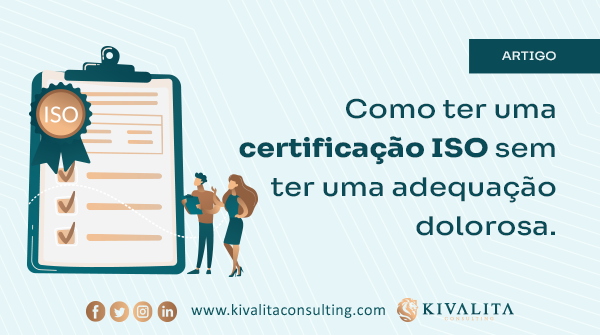The Product Quality Review (PQR) is a periodic report that is essential to ensure the critical evaluation of processes of manufactured products for a period of time, and thus detect possible trends or deviations. compliance of the manufacturing processes of medicines and active pharmaceutical ingredients. This article covers in detail how to conduct PQR according to Guide No. 9/2022 – version 3, published by Anvisa in 2022.
PQR is a key practice adopted by leading global regulatory authorities and pharmaceutical manufacturers to ensure a critical assessment of the integrity of the processes involved in the manufacture, storage, distribution, and consumption of products. This process helps in the identification of corrective and preventive measures, promoting the continuous improvement of the quality of pharmaceutical products and active pharmaceutical ingredients.
Purpose of the Product Quality Review
The main objective of PQR is to evaluate the consistency of the manufacturing process, the adequacy of the specifications applied and identify possible improvements. In addition, PQR is crucial for verifying the consistency of the production process, determining the need for process revalidation, identifying product and process improvements, providing a review of product and process performance, and assisting in taking preventive actions.
Procedure and Methodology for Performing PQR
The coordination of the PQR should be assigned to a responsible person or team, ensuring that all activities are conducted effectively and on time. The team should be made up of representatives from all departments that contribute data or reviews, such as Quality Control, Quality Assurance, Production, Stability, Distribution, and Engineering. A detailed Standard Operating Procedure (SOP) should guide the entire PQR process, specifying responsibilities, periodicity, objectives, documents to be evaluated, formatting of the final report, and review and approval procedures.
It is necessary to establish a schedule to ensure that all activities are completed within the stipulated time frame is essential, making it easier for the team involved to prioritize tasks. Holding regular team meetings is also essential to ensure that objectives are met and avoid unforeseen events. Management support is crucial to ensure understanding of the benefits of PQR and the availability of necessary resources.
Frequency and Content of PQR
The PQR should be conducted and documented annually, considering previous reviews. The content of the PQR should include the period assessed, usually one year, a detailed description of the product and the batches manufactured, approved and rejected, and a summary of key observations, such as the number of batches manufactured, approved and rejected, and a description of the investigations carried out.
It is important to evaluate the raw materials and packaging materials used, including analyzing supply chain traceability. Performing a statistical evaluation of control results in critical processes and finished products to verify process consistency is essential. Batches that did not comply with the established specifications must also be reviewed, including a summary of investigations and CAPAs.
The PQR should include a review of significant deviations or non-conformities, their investigations, and the effectiveness of corrective and preventive actions, as well as changes in processes or analytical methods, post-registration changes, and stability program results. Evaluate the volume of returned products and the causes of returns, the investigations carried out, and corrective and preventive actions. Demonstrate the effectiveness of the corrective actions identified in the previous PQR related to the process or equipment and conduct a review of the post-approval commitments made with the health authority.
Below see the topics in more detail:
I. Evaluated Period and Approach
Specifying the period to be evaluated in the review is crucial. Generally, the PQR includes all batches manufactured during a year. It can be useful to determine shorter periods for products with a large number of manufactured batches.
II. Product Description and Batches
Include a detailed product description, presentations, packaging, and master formula codes. List all batches manufactured in the evaluated period, including those approved and rejected.
III. Review Summary
Provide an overview of key observations made, such as the number of batches manufactured, approved and rejected, and the investigations performed. Highlight unexpected results and process changes adopted to prevent recurrences.
IV. Review of Raw Materials and Packaging Materials Used in Manufacturing
Review the raw materials and packaging materials used, especially those from new sources. Assess supply chain traceability and supplier qualification.
V. Review of Controls in Critical Processes and Quality Control Results of Finished Products
Perform a statistical evaluation of control results on critical processes and finished products to verify process consistency. Use statistical tools like CPK and PPK.
VI. Review of All Batches That Have Not Met the Established Specifications and Their Investigations
List the batches that did not meet the established specifications and include a summary of the respective investigations and corrective actions.
VII. Review of All Significant Deviations or Non-Conformities, Their Related Investigations, and the Effectiveness of the Resulting Corrective and Preventive Actions
Review any significant deviations or non-conformities, your investigations, and the effectiveness of corrective and preventive actions implemented.
VIII. Review of All Changes Made to Analytical Processes or Methods
Describe all changes made to analytical processes and methods, evaluating their approvals, documentation, and implementations. Consider the cumulative effect of small changes.
IX. Review of Post-Registration Changes Submitted, Authorized or Rejected, Including Those Relating to Products Registered in Other Countries (Export Only)
Include a summary of each post-registration change and its approval status. All changes must be included in the Product Quality Review.
X. Review of the Results of the Accompanying Stability Programme and Any Adverse Trends
List data from completed and ongoing stability studies, evaluating deviations or trends in results. Evaluate whether the tests and analysis methods remain appropriate.
XI. Review of All Returns, Complaints and Recalls Related to Product Quality and Investigations Carried Out at the Time
Evaluate the volume of returned products and the causes of returns. Include a summary of the complaints received and the corrective and preventive actions taken.
XII. Review of the Adequacy of Any Prior Corrective Actions Related to the Product Process or Equipment
Demonstrate the effectiveness of corrective actions identified in the previous PQR related to the process or equipment.
XIII. Review of Post-Approval Commitments for New Registrations and Post-Registration Changes
Revisit the commitments made with the health authority and assess the need for adjustments. The maintenance of the concessions is linked to the fulfillment of the established deadlines.
XIV. Review of the Qualification Status of Relevant Equipment and Utilities, such as Ventilation, Heating and Air Conditioning (HVAC) System, Water, Compressed Gas Systems, etc.
Present a summary of the relevant equipment and utilities qualification situations. Reference specific documents if necessary.
XV. Review of Any Contractual Provisions Related to Outsourced Activities
Describe the outsourcing contracts and technical agreements signed, assessing whether they are up to date and comply with the requirements of Good Manufacturing Practices.
XVI. Interpretation of the PQR Results
Present the data in charts or graphs, highlighting trends or deviations. Use statistical analyses to support conclusions about process variability and capability.
XVII. Conclusions and Recommendations
Include a conclusion about the control state of the process and any recommendations for improvement. List any conclusions about the revised product and recommendations for revalidation or necessary changes.
Examples of the Application of PQR as a Quality Tool
Reviewing the data may indicate the need to:
– Change product specifications to ensure product quality.
– Analysis of the data may reveal the need for changes in manufacturing or control processes to improve efficiency and quality.
– The PQR may indicate the need for process revalidation to maintain compliance with quality standards.
– In addition, PQR serves as a communication tool to inform management about the current state of processes and products, facilitating decision-making.
PQR is an essential practice to ensure the quality and compliance of the manufacturing processes of medicines and active pharmaceutical ingredients. Following the guidelines established in Anvisa’s Guide No. 9/2022 – version 3 is essential to ensure that products meet quality and safety requirements, promoting continuous improvement and process effectiveness.
Do you need to know more about the subject? Subscribe to our live “How to have an PQR according to Anvisa’s criteria” Learn more by clicking here. July 30, 2024 at 6:30 pm online, free and with certificate.
And if you need support to build this document, count on Kivalita.



